Session Data
- Date: 8/09/2023
- Time: 19:21 – 22:02 UT
- Seeing: II. Good – Slight
- Transparency: II. Clear with some cloud
- Temp: 14.3C,
- Air Pressure: 1025mb,
- Humidity: 90%,
- Dew Point: 12.8C,
- Wind Speed: 4mph
- Average FWHM: 3.9
- SQM:19.8 magn/arcsec^2
Scope: Altair 250mm RC f/5.3 Camera: ZWO ASI 294MC Pro, No Filter. Dark subtracted and Flat fielded.
Session Notes:
This was one of those sessions that started off really well weather wise, but didn’t last long as high thin cloud rolled in after a couple of hours. Still working my way through SJM book ‘Hidden Treasures’ All images are North up and West to the left.
Barnards Star, HT87, HIP87937
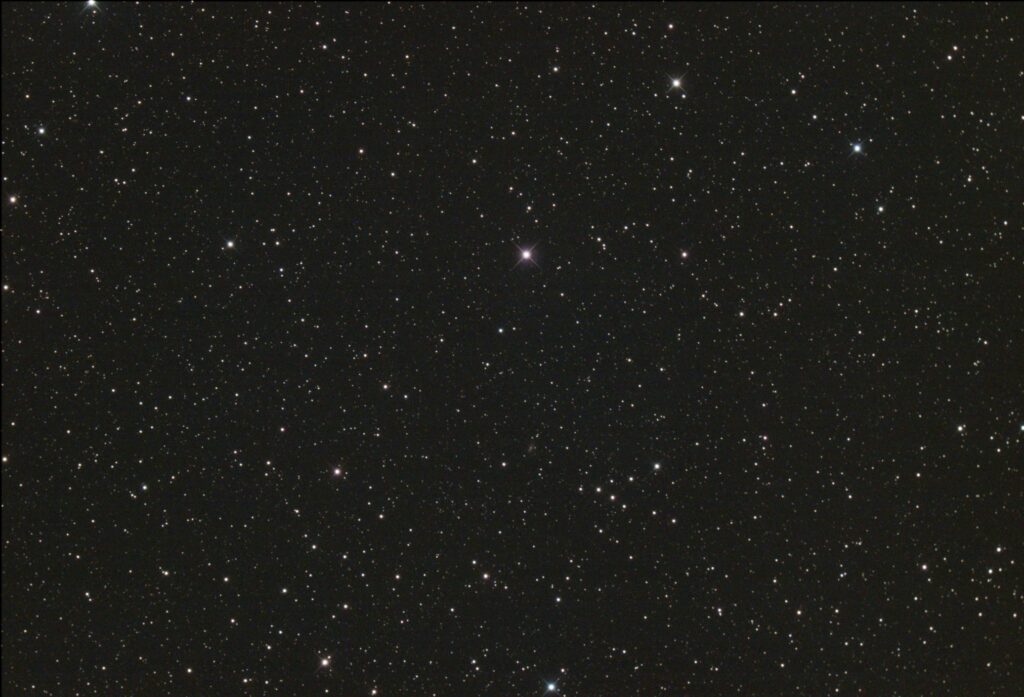
OK. Another one of those rather pointless targets. It’s a bright star. It is a little warm in colour, but nothing out of the ordinary.
Well that is how my notes for this objects started. As a little background – I don’t read up on these objects before I make an observation. I think if you do, your own observation is tainted my what you expect to see, rather than what you do see. In this case, this one took me by surprise. First of all there was nothing in the cross hairs as the centre of the image frame. The brightest star in the frame was just off West and to the North a little. I double checked the coordinates were correct and I did a second platesolve in NINA just to make sure. Everything check out. The target was supposed to be in the centre of this image. I then read SJM note in Hidden treasures. My observation continues……
That is until you read its proper motion figures
Proper Motion: RA: -848.5 mas/yr Dec: 10341.9 mas/yr and just 6 light years distant. That’s 10.3 arc seconds a year.
I’ve just plate solved it in ASTAP and it’s coordinates for today are
RA 17 57 47.15 DEC +4° 45 41.
You get so used to J2000 coordinates always plonking the target in the centre of the frame, that when it doesn’t, you immediately think they are either wrong, or you have screwed up at your end somehow.
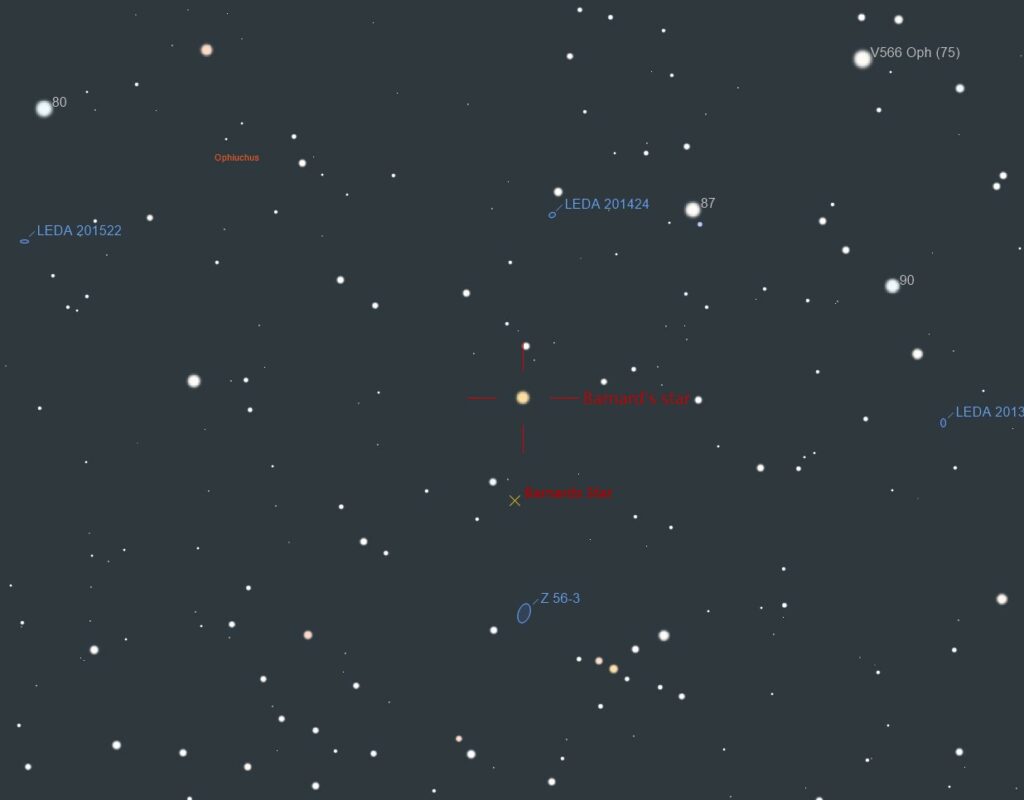
The red text ‘Barnards Star’ are the J2000 coordinates and the red cross hairs show where Skytools 4 plots it for JNOW. Since 2000 and now, Barnards has traveled 4 arc/min in a 355.2 PA direction
It’ll be interesting to measure this again next year to check these PM figures again.
Image integration Time; 240 secs
NGC6572, HT90
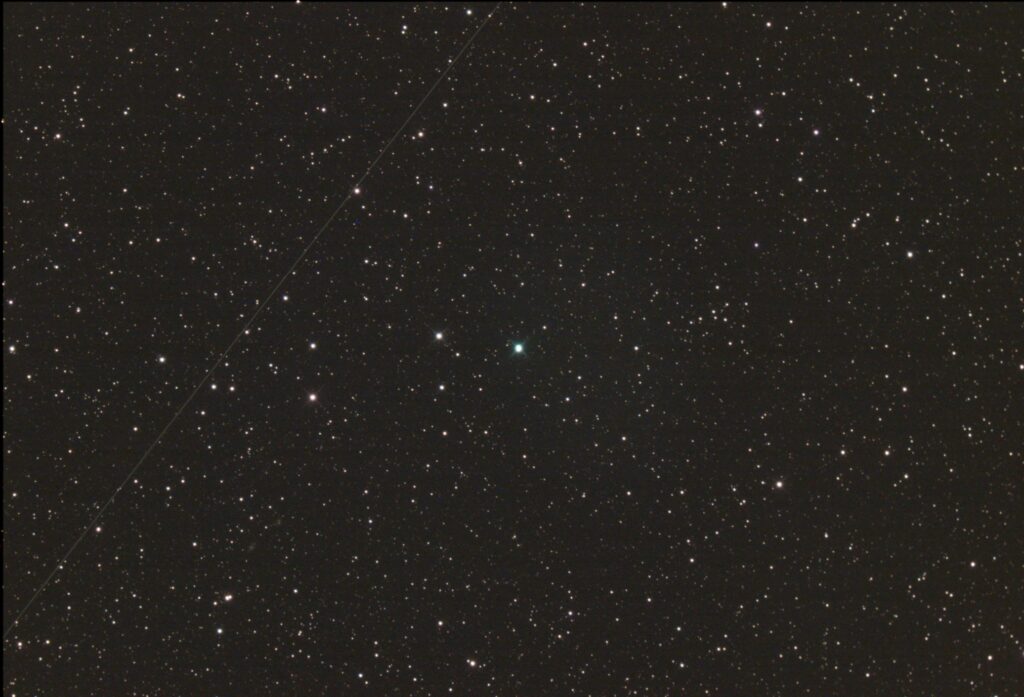
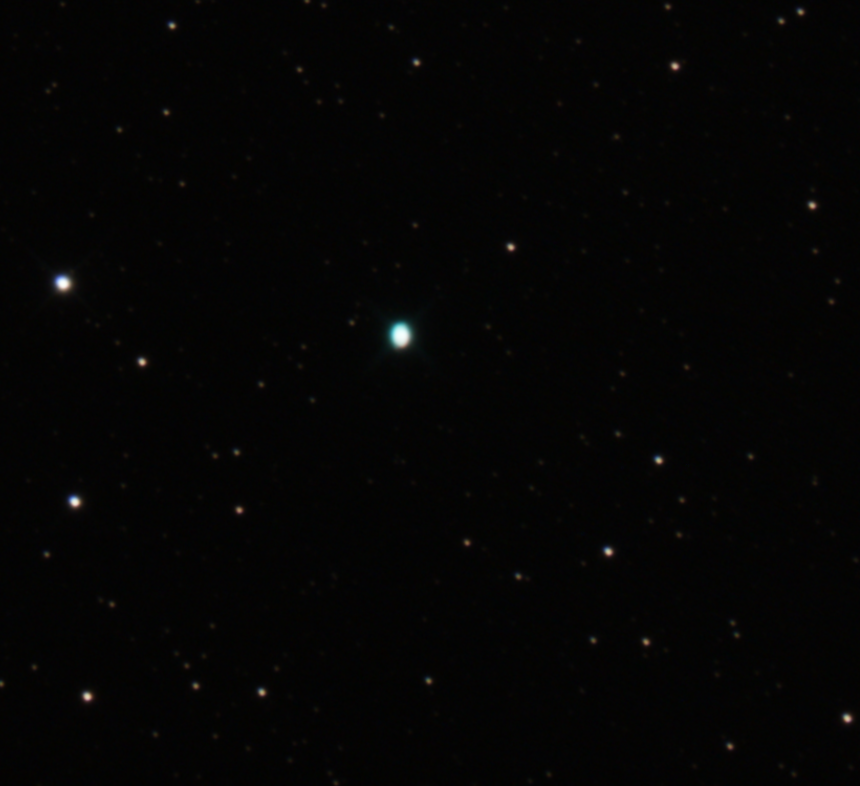
Not sure there is a lot to see here. It certainly has a brighter core – nothing stellar – and it takes on that greenish/blue. It is also oval running just East of North. The second image is a close crop.
Image integration Time; 390 secs
NGC1545, HT26
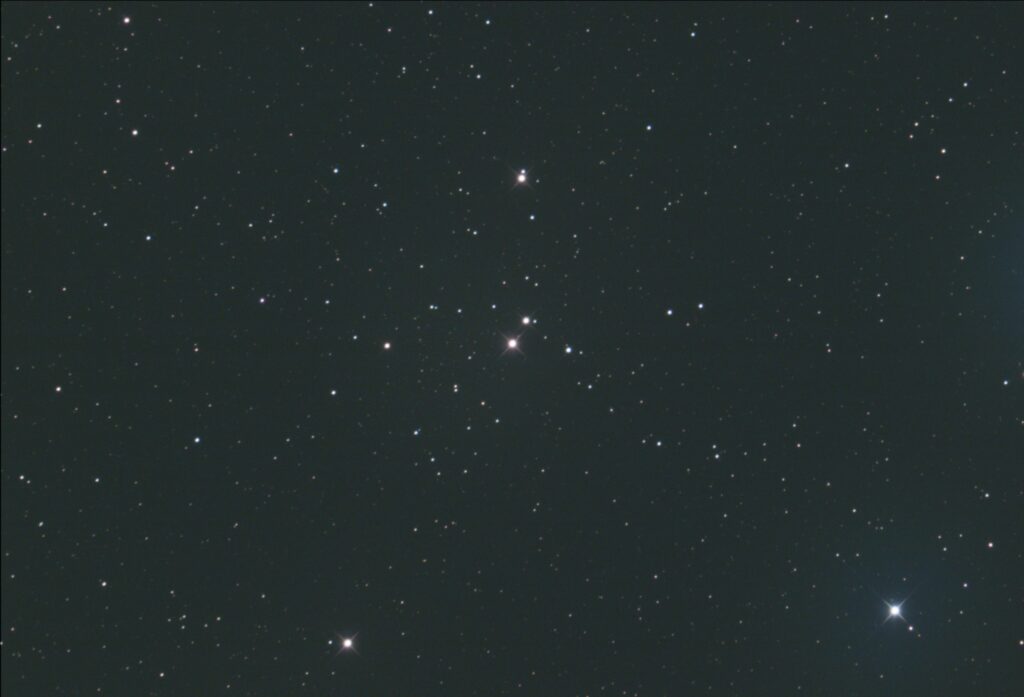
A rather nice contrast of star colours in this frame. To the Southwest is a blue A5 spectral 5.5 Star HD27084. To the Southeast is HD27395, a G0 at 7.3 mag. At the centre of this almost non-existent cluster is the much redder K2 7.3 mag HD27292 and above that what could be an Orange /Blue Double consisting of HD27276 7.7 mag K2 and its blue twin STF 519B 9.4 mag.
Component B of pair AB; primary star is HD 27276
PA 348° Sep 18.40″ (1999) : obvious split (obvious split at best)
There is not a lot to this cluster, but if you stare you might see a pentangle shaped star with its uppermost point, pointing due North.
Image integration Time; 195 secs
NGC1624, SH2-212 and Berkeley 67
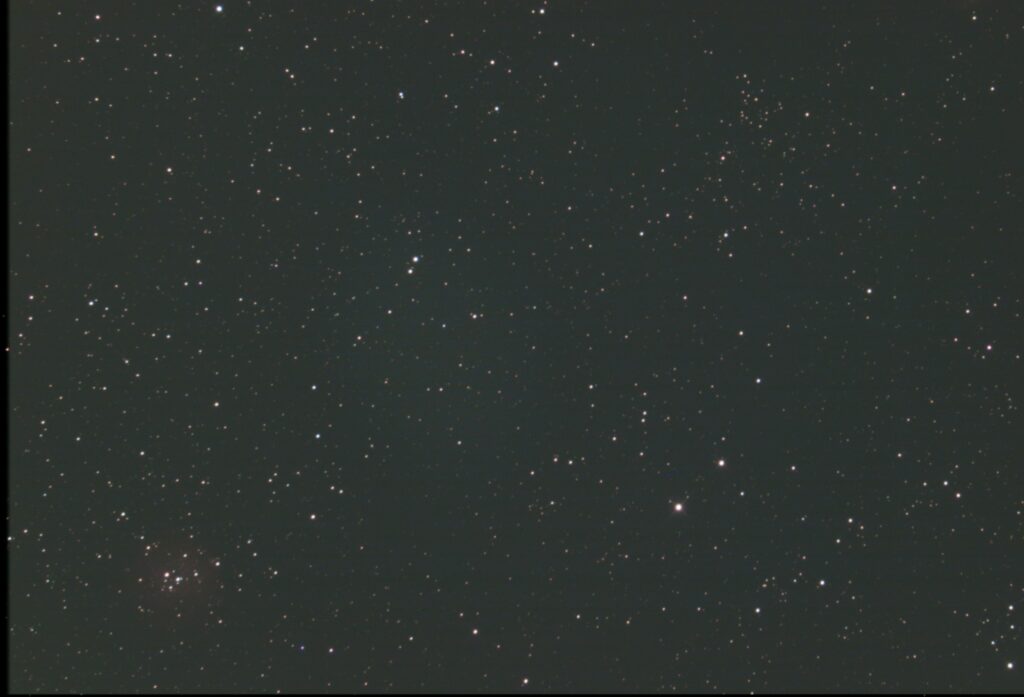
Going off piste from the book and just rather liked the look of these two objects in the same FOV.
Two for the price of one in this FOV. The Open Cluster NGC1624 which is embedded within the bright nebula SH2-212 to the South East and in the opposite corner the open Cluster Berkeley 67 – which Skytools comments as ‘Reality of cluster in doubt’.
The Cluster NGC1624 at its heart has three 12 –13 mag stars, one of which is the Orange star GSC 03350-0373 or if you want to find it on Simbad MFJ SH 2-212 6. This grouping is at the head of a V shaped arrowhead pointing just off East of due South. Surrounding this is a circular shaped ball of nebulosity. There is a dark dust lane that meanders through the centre NE- SW forming larger dark pockets of darkness as it goes.
To the Northwest is Berkeley 67. I’m not sure I can describe the shape exactly, but triangular would be a good start. There are a couple of curved lines of stars that make up one side of the triangle and at its tip what I can only describe as an old-fashioned ink nib. I’ve tried to carefully colour balance the image and I would say most of these stars here are Yellow/Orange, so are quite old?
Image integration Time; 1185 secs
It was at this point just as i was about to observe NGC772, HT8 that the cloud rolled in and ended the session.